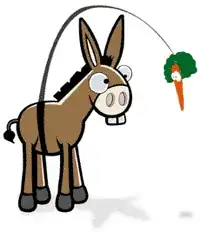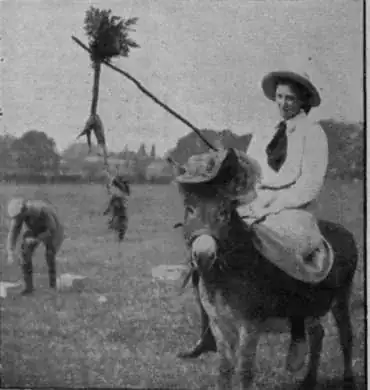Some idioms ("chase the carrot" / "carrot and stick") and a popular image (as shown below) suggest that you can make a mule move forward (and pull a cart), by placing a carrot or some other food hanging from a stick, in front of its face.
For example, a dictionary of urban idioms explains:
"chase the carrot": attempting to reach the unreachable, in the old days a carrot was tied to a stick in front of a wagon's mule or stubborn horse to make them step forward and walk ahead... they were never able to reach the carrot.
Is this known to really happen so? Have this (or some variation) been used as a practical locomotive trick? (things like the rabbit at dog races don't count; the key is that the animal itself moves the object it's seeking).

